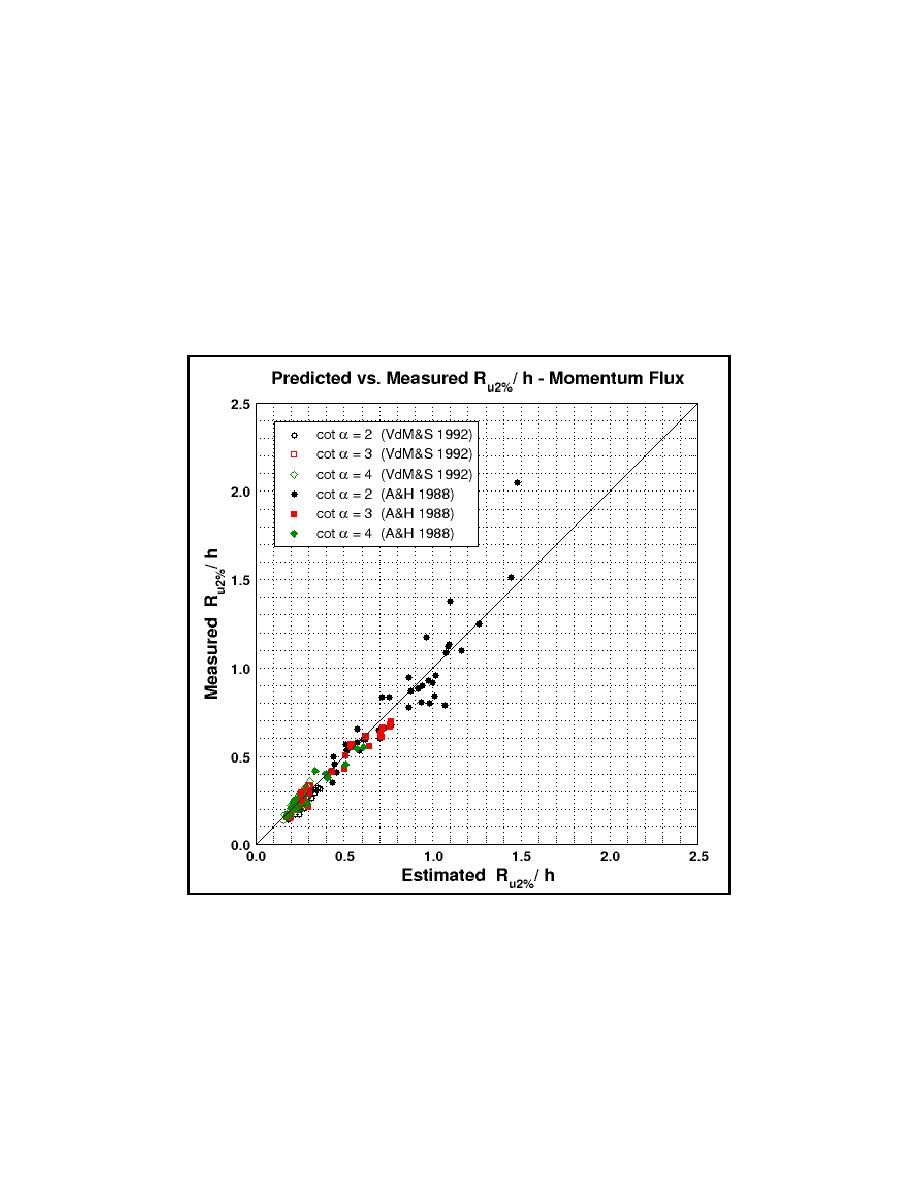
ERDC/CHL CHETN-III-70
July 2005
reduction factor. The data of van der Meer and Stam (1992) are clustered at low values of Ru2%/h
because the experiments were conducted for structures in relatively deep water. In deeper water,
incident wave nonlinearity is less, and the waves bear more resemblance to sinusoids.
A direct comparison between the new runup formula (Equation 13) and formulas given in the
Coastal Engineering Manual (Equation 4) for the two laboratory data sets is made in Figures 4 and
5. The new runup equation based on wave momentum flux (Figure 4) gave a reasonable estimate of
the measured 2-percent runup, but the van der Meer and Stam (1992) formulas, converted to use
peak period, Tp, gave slightly better results (Figure 5). Most of the difference between the two
methods stems from data obtained for the 1:2 rough slope, particularly the data of van der Meer and
Stam (1992) that appear to be entirely nonbreaking waves with all values of ξop > 4.4.
Figure 3. Predicted versus measured Ru2% /h for rough, impermeable plane
slopes
7


 Previous Page
Previous Page
